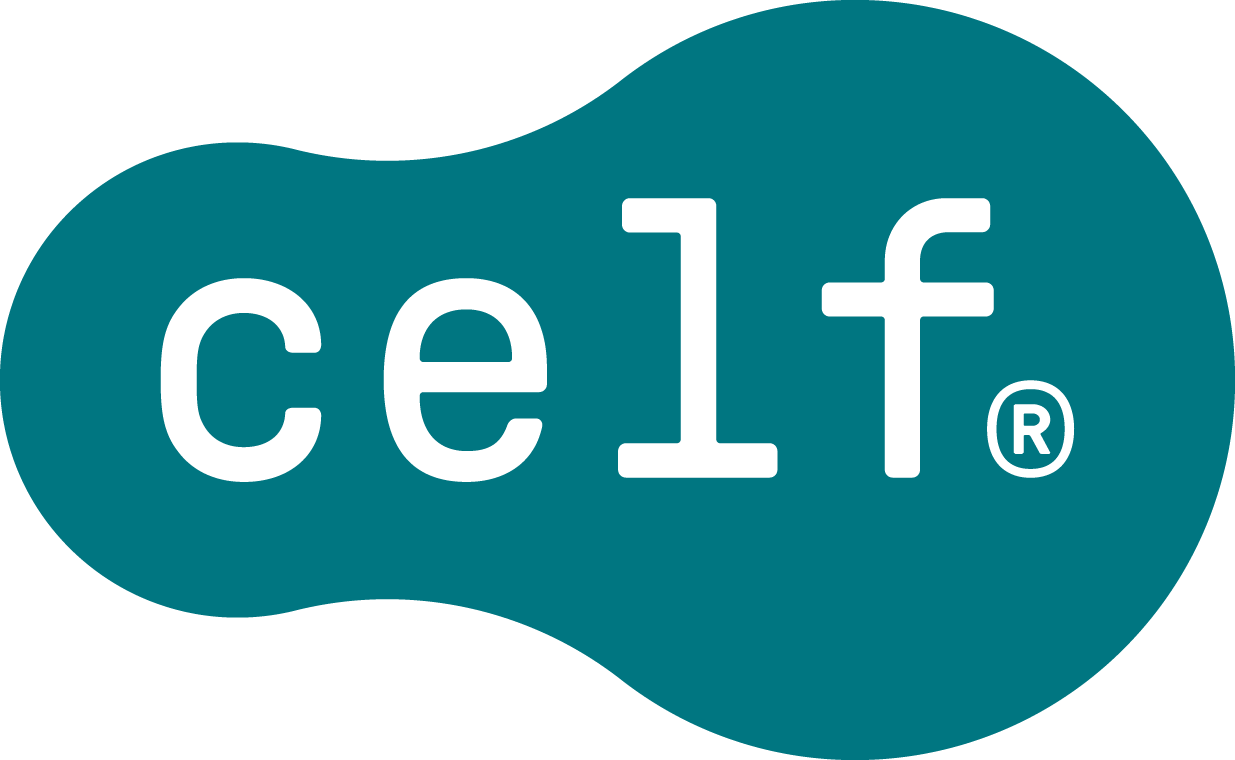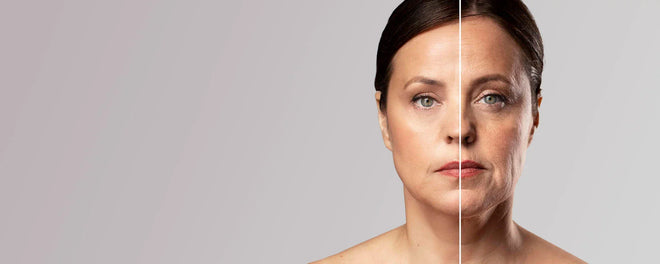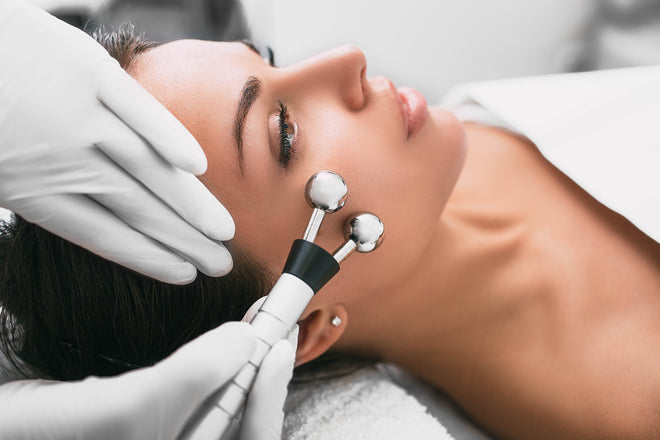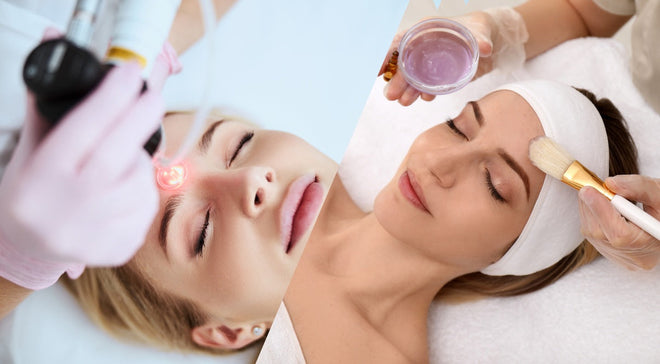How to Rebuild Collagen After Rapid Weight Loss
Table of Contents
Meta Description: Discover science-backed methods to rebuild collagen after weight loss, including how CELF Microvibration Therapy restores tighter, firmer skin—no needles required.
Introduction
Shedding pounds is a special achievement, often symbolising perhaps renewed health, energy, and self-confidence. But for some, the transformation may result in loose, sagging skin that no longer conforms to the body's shape. Particularly after rapid weight loss, the skin can lose its original structure and firmness and lose its firm feel.
So, why does this happen? The skin's elasticity mostly depends on two structural proteins, collagen and elastin. When weight comes off fast, the skin just cannot adjust in time. Hence, we notice the skin visibly losing support and volume.
Scientific research has improved along the way. Technologies such as CELF Microvibration Therapy offer an exciting, at-home way to rejuvenate the bounce from your skin. This article will discuss collagen and its working system, why it lessens, and how your body’s natural collagen-producing processes can be supported using science-backed methods.
Ready to take control of your skin’s future? CELF can help you rebuild collagen and confidence—explore the science here.
1. What Happens to Your Skin After Rapid Weight Loss?
A. The Difference in Speed: Rapid Weight Loss vs. Gradual Weight Loss
If your weight goes off too fast, your skin never gets that little stimulus which makes it remodel gradually. Gradual weight loss allows collagen and elastin to respond, but rapid changes lead to volume loss without structural support, according to research in the Annals of Dermatology (PMC3316137).
B. Collagen and Elastin: The Scaffolding of Skin
Collagen (specifically Types I and III) and elastin are like the skin's superstructure. They impart tensile strength and elasticity. Skin suspended without these proteins or having their depletion will become thin, wrinkled, or saggy.
Quick Fact: Collagen production decreases by roughly 1% after the 20s, and external variables like stress or weight imbalance will further accelerate the process.
C. Common Signs of Collagen Loss
-
Skin appears loose, especially around the abdomen, arms, and thighs
-
Wrinkling or crepey texture
-
Longer indentation recovery (from pressure or clothing)
-
Dull, tired-looking skin
Interested in how to naturally support your fibroblasts—cells responsible for collagen production? Learn more about CELF.
2. The Science of Collagen Restoration
A. What Is Collagen and How Is It Produced?
Collagen is a protein made by fibroblast cells located in the dermis. It’s essential for maintaining firm, supple, and youthful skin. Type I collagen offers structural support, while Type III provides elasticity. According to recent reviews in Cells (PMC9254365), these types are most affected by ageing and rapid fat loss.
B. Why Collagen Declines
-
Age: Natural cellular slowdown
-
Rapid volume loss: Skin may lose the tension that helps support collagen production to trigger collagen production
-
Oxidative stress and inflammation
-
Hormonal changes and nutrient deficiencies
C. How to Stimulate Collagen Production
-
Mechanical Stimulation (Microvibration)
CELF Microvibration Therapy offers gentle mechanical stimulation, which research suggests may help support collagen production—similar to exercise for your fibroblasts. Studies show that gentle mechanical stimulation can reactivate collagen synthesis (PubMed 28746863). -
Topical Support
-
Vitamin C: Promotes collagen cross-linking
-
Peptides: Signal skin to rebuild
-
Retinoids: Enhance fibroblast activity
-
Nutritional Input
-
Zinc, Vitamin C, proline, and glycine are essential for collagen formation.
Unlike surface-only skincare, CELF works through non-invasive mechanical stimulation at the skin’s surface to support deeper rejuvenation. Dive into the vast science of skin health.
Tested Ways to Rebuild Collagen After Rapid Weight Loss
A. Non-Invasive Approaches at Home
1. Microvibration Therapy (CELF)
It uses low-frequency microvibrations—generated by the Oral-B iO electric toothbrush—to gently stimulate the skin without pain, needles, or irritation. This method:
-
may help enhance circulation
-
support the skin’s natural renewal processes
-
assists in the absorption of skincare(actives such as HA and Vitamin C).
Compared to tools like derma rollers, CELF is designed to be non-invasive, user-friendly, and suitable for home use.
2. Nutrition
-
Bone broth, eggs, citrus fruits, and leafy greens all serve as sources of nutrients that aid in collagen production
-
Hydrolysed collagen peptides have been proven clinically for improving elasticity and hydration with PubMed 30681787
-
Other aspects affect collagen absorption, where a good gut environment is required; thus, probiotics and fermented foods will be of great help.
3. Topical Ingredients to Prioritise
-
Retinoids: Promote dermal regeneration
-
Peptides: Support matrix rebuilding
-
Vitamin C (L-ascorbic acid): Essential cofactor for collagen formation (PMC5579659)
-
Hyaluronic acid: Attracts water, improving skin density and texture
B. Some Other In-Clinic Procedures (Just for Comparison)
-
Microneedling
-
Radiofrequency Therapy
-
Ultrasound (Ultherapy)
-
Laser Resurfacing
These options offer benefits but often come with cost, downtime, and risk of irritation or hyperpigmentation.
C. Why use CELF?
'CELF fills the gap between clinic-grade results and the at-home method of convenience—with no downtime.'
🎯 Try CELF today and bring your skin’s resilience back to life—shop now.
A Custom Skincare Routine After Weight Loss
A. Morning Routine (AM)
-
Cleanse gently with non-stripping formulas
-
Exfoliate 2–3x/week with lactic or mandelic acid
-
Apply Vitamin C serum.
-
Finish with SPF 50
B. Evening Routine (PM)
-
Double-cleanse Apply the CELF Deep hydrating Hyaluronic Acid Glide Serum
-
Use CELF device for 2 minutes
-
Apply retinoid or peptide-based cream.
C. CELF Usage Guide
-
After brushing your teeth in the evening
Detach your toothbrush head and attach the CELF adapter. -
Apply serum
Apply a few drops of the accompanying deep hydrating glide serum. -
Activate and glide
Switch on your Oral-B® iO™ and gently glide CELF across your face using slow, circular motions for 2 minutes. -
4. Clean and store
Rinse the adapter head with warm water, and store in a dry place. -
Photo evidence weekly
Pair CELF with your actives and see up to 2x better absorption.
Add CELF to your skincare toolbox now.
Real Results: Testimonials and Before & Afters
-
‘Having healthy skin isn't just about going to the dermatologist or aesthetician a few times a year. It's about taking care of your skin daily—after all, you don't do things like taking a multivitamin or exercising just once a year, and skin care is the same.’
— Dr. Todd Schlesinger, MD, FAAD, FASMS Board—Certified Dermatologist. -
'I've been working with the CELF team for almost a year now, and I've seen a significant improvement in my skin and a reduction in the amount of Botox I need. I shouldn't admit that!'
— Dr. Stevie Potter, Dentist & Medical Aesthetic Practitioner
Read more at https://celf.beauty/pages/clinical-reviews.
When to Expect Results & What to Avoid
A. Realistic Timelines
-
Some users report early signs of improved skin tone within 3–4 weeks, with continued use leading to enhanced results over time, with improved tone
-
8–12 weeks: Significant improvement in sagging, hydration, and radiance
-
Continued use sustains and enhances the results
B. Mistakes to be Avoided
-
Too much exfoliation damages the skin barrier.
-
Skipping hydration slows down the collagen production processes.
-
Inconsistency affects how effectively the device works.
The consistency. Continue making CELF part of your daily self-care routine.
Start your CELF journey today.
Conclusion: Restore, Rebuild, Reclaim Your Radiance
Fast weight loss changes your body, but your skin requires time, nurturing, and science to keep pace. By combining smart science-driven remedies like CELF microvibration therapy into your skincare routine, you can start rebuilding the collagen structure in your skin and regain that firmness so you glisten with confidence.
The hard part is done. Now let the skin reflect your transformation.
Reclaim your glow. Restore your skin’s strength. Try CELF today.
Shop Now
FAQs
1. How can I fix saggy skin after rapid weight loss naturally?
You can improve saggy skin by focusing on natural collagen production. Eating protein-rich foods, vitamin C, and omega-3s, staying hydrated, strength training, and practicing skin massage all help restore elasticity without surgery.
2. Can collagen really tighten loose skin after weight loss?
Collagen plays a key role in tightening loose skin. While supplements and collagen-rich foods can support your skin’s repair, combining them with exercise, hydration, and proper skincare gives the best results.
3. How long does it take for skin to tighten after extreme weight loss?
Skin tightening depends on age, genetics, and how much weight you’ve lost. For many, it can take several months to a couple of years of consistent collagen support through diet, skincare, and lifestyle habits.
4. Will losing 50 pounds cause saggy skin?
Yes, losing 50 pounds quickly can cause saggy skin, especially if the weight loss is rapid. Supporting collagen production through nutrition, supplements, and resistance training can minimize loose skin.
5. How to rebuild collagen after rapid weight loss naturally?
Natural methods include eating collagen-boosting foods (bone broth, citrus, leafy greens), using vitamin C and retinol skincare, doing resistance exercises, and staying hydrated.
6. How can I rebuild collagen at home after weight loss?
At home, you can rebuild collagen with DIY remedies like aloe vera masks, facial massages, and collagen-boosting foods. Some people also use collagen peptide powders in smoothies.




